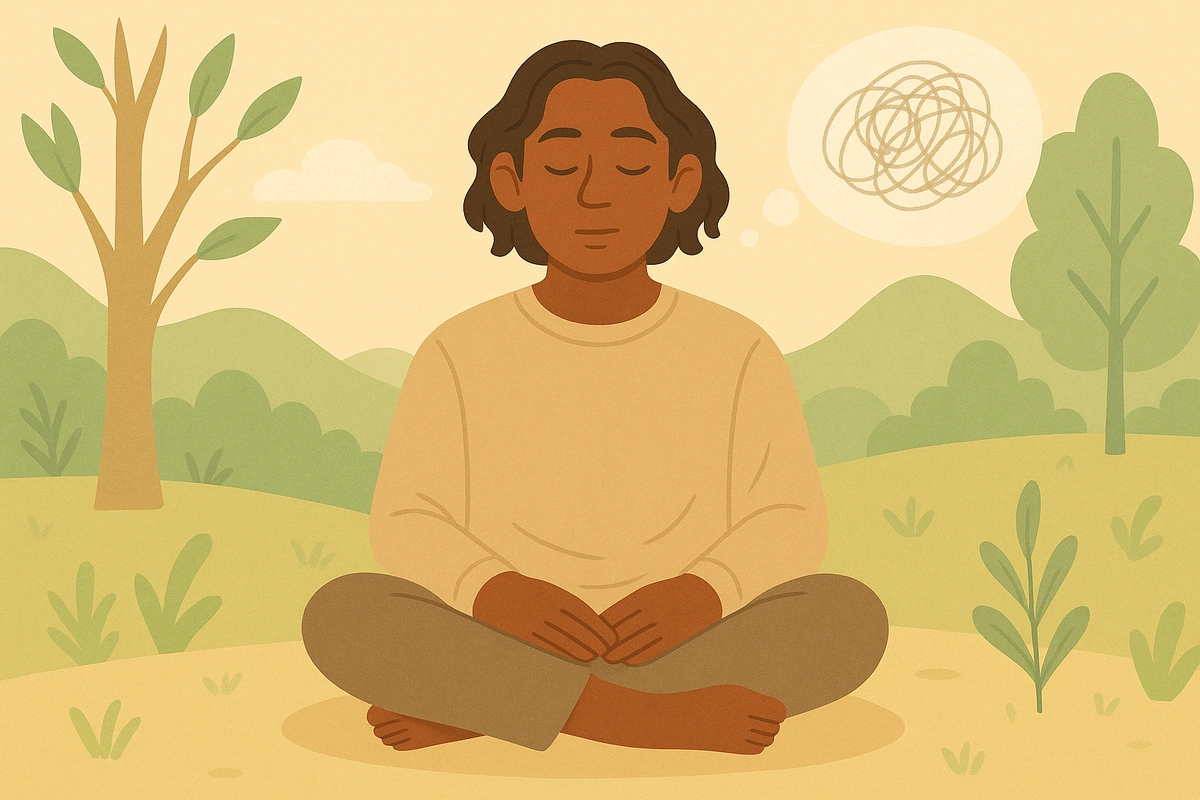Learning that you are not your thoughts helps you step back from anxious or distressing thinking and see thoughts as temporary mental events rather than absolute truths. This mindfulness practice reduces emotional reactivity and builds psychological flexibility by creating healthy distance between you and your inner experiences.

Practice recognizing that you are not your thoughts by observing your thinking patterns without getting caught up in their content. This mindfulness technique helps you develop a healthier relationship with your inner experiences by learning to watch thoughts come and go rather than believing everything your mind tells you.
Your mind generates thousands of thoughts each day, but you don't have to believe or act on every single one. When you're anxious, stressed, or overwhelmed, thoughts can feel incredibly real and urgent, pulling you into worry spirals or negative self-talk. Learning to step back and observe your thinking creates space between you and your thoughts, giving you freedom to choose how you respond.
The practice of recognizing you are not your thoughts works by engaging what neuroscientists call "meta-cognitive awareness" - the ability to think about your thinking. This creates what researchers describe as cognitive defusion, which reduces the power that thoughts have over your emotions and behaviors.
When you're "fused" with your thoughts, you experience them as reality rather than mental events. This fusion often leads to emotional distress because you react to thoughts as if they were facts. By learning to observe thoughts, you activate the part of your brain responsible for self-awareness and perspective-taking.
The labeling component works through what psychologists call "affect labeling" - the process of putting emotional experiences into words. Research shows that simply naming thoughts as thoughts reduces activity in the brain's alarm center and increases activity in areas responsible for emotional regulation.
The cloud metaphor helps because it provides a visual representation of the temporary nature of thoughts. Just as clouds naturally form and dissolve in the sky, thoughts naturally arise and pass away in the mind when you don't feed them with attention or resistance.
This practice builds psychological flexibility - the ability to adapt your behavior based on your values rather than being controlled by thoughts and feelings. Acceptance and commitment therapy research shows that psychological flexibility is strongly linked to mental health and wellbeing.
Regular practice strengthens what mindfulness teachers call "the witness consciousness" - the part of you that can observe your inner experiences without being overwhelmed by them. This observer perspective provides stability and peace that isn't dependent on having pleasant thoughts or positive emotions.
"I can't stop my thoughts or they keep pulling me in" - This is completely normal and expected. The goal isn't to stop thoughts but to notice when you've been caught up in them and gently return to observing. Every return to awareness is success.
"Some thoughts feel too intense or scary to observe" - Start with gentler thoughts and build your capacity gradually. If thoughts feel overwhelming, ground yourself with breathing or physical sensations before returning to thought observation.
"I feel like I'm just thinking about thinking" - This meta-thinking is part of the process initially. With practice, observation becomes more direct and less analytical. Focus on the quality of awareness rather than thinking about the practice.
"I don't notice any difference in my thoughts" - The practice isn't about changing thought content but changing your relationship to thoughts. Notice subtle shifts in how much thoughts affect your emotions or behavior.
"I feel disconnected or spaced out" - If observation feels too detached, ground yourself with physical sensations or movement. The goal is aware presence, not disconnection from your experience.
"My mind feels too busy for this practice" - Busy minds often benefit most from thought observation. Start with very short sessions and use your breath as an anchor when mental activity feels overwhelming.